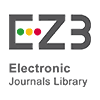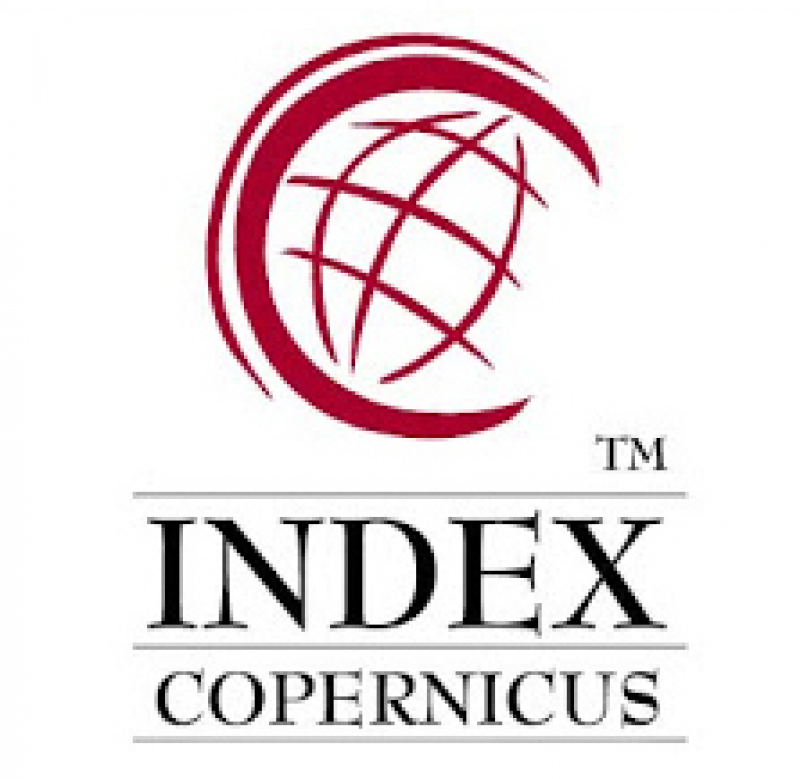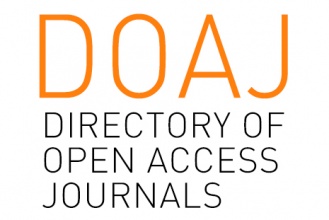The Shift in Charisma of Islamic Boarding School Kyai in Tasikmalaya City After Reform Indonesia
Abstract
Keywords
Full Text:
PDFReferences
Anwar, A. “The Shift of Kyai’s Roles in Kediri East Java in the Post New-Order Era: The contribution on local environment context”. In IOP Conference Series: Earth and Environmental Science (Vol. 469, No. 1, p. 012034). (2020, April). IOP Publishing. [Available online at https://www.doi.org/10.1088/1755-1315/5469/1/012034].
Azizah, N. Artikulasi politik Santri: dari Kyai Menjadi Bupati. Yogyakarta: Pustaka Pelajar, 2013.
Creswell, J. W., & Poth, C. N. Qualitative inquiry and research design: Choosing among five approaches. Sage publications, 2016.
Dhofier, Z. “Kinship and marriage among the Javanese Kyai. Indonesia”, (29), 47-58. (1980). [Available online at https://www.Jstor.org/stable/3351004].
Dow Jr, T. E. “The theory of charisma” The Sociological Quarterly, 10 (3), 306-318. 1969. [Available online at https://doi.org/10.1111/j.1533-8525.1969.tb01294.x].
Hikmawan, M. D., Godjali, M. R., & Indriyany, I. A. (2020). Kyai and power in banten, Indonesia. In SHS web of conferences (Vol. 86, p. 01051). EDP Sciences. [Available online at https://doi.org/10.1051/shsconf/20208601051].
Karim, A. G. “Pesantren'in Power: Religious Institutions and Political Recruitment in Sumenep, Madura”. RIMA: Review of Indonesian and Malaysian Affairs, 42(1), 2008. 157-184. [Available online at https://search.informit.org/doi/10.3316/ielapa.181422962164124].
Karim, S., Mamat, S. A., & Posssumah, B. T. “Islamism and Democratization in Indonesia Post-Reformation Era: Socio-Political Analysis”. International Journal of Islamic Thought, 6, 79. 2014.
Karim, A., Purnomo, H., Fikriyah, F., & Kardiyati, E. N. “A charismatic relationship: how a Kyai's charismatic leadership and society's compliance are constructed?”. Journal Of Indonesian Economy & Business, 35(2), 2020. [Available online at https://core.ac.uk/download/pdf/326032935.pdf].
Khoiri, Q. Repositioning Kiyai at Pesantren [s] in Political Dynamics of Nationality (An Analysis of Kyai's Role and Function in Modern Education System). In International Conference on Education, Islamic Studies and Social Sciences Research 2018, (2018, July). (pp. 1-7). Universitas Negeri Padang. [Available online at https://doi.org/10.32698/24229].
Latief, H. The masyumi networks and the proliferation of Islamic higher education in Indonesia (1945–1965). Bijdragen tot de taal-, land-en volkenkunde/Journal of the Humanities and Social Sciences of Southeast Asia, 178(4), 2022, 477-502. [Available online at https://doi.org/10.1163/22134379-bja10043].
Madjid, N. Bilik-bilik pesantren: sebuah potret perjalanan. Jakarta: Paramadina. 1997.
Mietzner, M. “Authoritarian innovations in Indonesia: electoral narrowing, identity politics and executive illiberalism”, Democratization, 27(6), 2020. 1021-1036. [Available online at https://doi.org/10.1080/13510347.2019.1704266].
Nasution, F. A., Thamrin, M. H., Sinaga, R. P. K., Saraan, M. I. K., & Indainanto, Y. I. “Humbang Hasundutan regional head election in 2020: empty box volunteer political communication movemen”, Studies in Media and Communication, 11(1), 2023. 52-59. [Available online at https://doi.org/10.11114/smc.v11i1.5807].
Notosudirdjo, F. S. “Kyai Kanjeng: Islam and the search for national music in Indonesia”, The World of Music, 2003. 39-52. [Available online at https://www.jstor.org/stable/41700059].
Pomalingo, S., & Tangahu, W. Da'wah, Negotiation and Social Piety: “The Role of Kyai Ahmad Masduki Al-Jabalani in Building the Character of a Multicultural Society in Gorontalo, Indonesia”, Education, 3(4), 2023, 678-686. [Available online at https://doi.org/10.55677/jssers/V033l4Y2023-19].
Rahayuningsih, S., Setiawan, A., Warisno, A., Andari, A. A., & Anshori, M. A. (2023). The Importance of Kyai Charismatic Leadership in the Formation of Akhlakul Karimah. JMKSP (Jurnal Manajemen, Kepemimpinan, dan Supervisi Pendidikan), 8(2), 651-661. [Available online at https://doi.org/10.31581/jmksp.v8i2.11227].
Ridder, H. G. (2014). Book Review: Qualitative data analysis. A methods sourcebook (Vol. 28, No. 4, pp. 485-487). Sage UK: London, England: Sage publications.
Rosita, N. “Kepemimpinan Kharismatik Kiai di Pondok Pesantren Ali Maksum Krapyak Yogyakarta”, SANGKéP: Jurnal Kajian Sosial Keagamaan, 1(2), 2018. 166-183. [Available online at https://doi.org/10.20414/sangkep.v1i2.620].
Satori, A., & Nurohman, T. “Pergeseran Orientasi dan Ekspresi Elit Pesantren di Kota Tasikmalaya”, JSW: Jurnal Sosiologi Walisongo, 2(1), 17. 2018. [Available online at https://doi.org/10.21580/jsw.2018.2.1.2478 ].
Shiddiq, A., Ulfatin, N., Imron, A., Arifin, I., & Ubaidillah, A. F. Charismatic leadership of Kyai based on resilience of Pesantren in the time of the COVID-19 pandemic. [Available online at https://doi.org/10.53730/ijhs.v6nS5.8387].
Siregar, F. M. “Religious leader and charismatic leadership in Indonesia: the role of Kyai in Pesantren in Java”, Jurnal Kawistara, 3 (2). 2013. [Available online at https://doi.org/10.22146/kawistara.3977].
Sudarman, M. H., & Ubaid, A. H. The Strategies of Religious Leaders to Become Regional Heads in Indonesia. In ICIS 2020: Proceedings of the 2nd International Conference on Islamic Studies, ICIS 2020, 27-28 October 2020, Ponorogo, Indonesia (p. 1). (2021, February). European Alliance for Innovation.
Syauqi, A. A., Hartati, H., & Hasyim, A. F. “Interaksi Kyai Dengan Masyarakat Dalam Tafsir Al-Maraghi”, Diya Al-Afkar: Jurnal Studi al-Quran dan al-Hadis, 4(02). 2016. [Available online at https://doi.org/10.24235/diyaafkar.v4i02.1152].
Yani, M. T., Mahfud, C., Sa'adillah, S. R., Bustami, M. R., & Taufiq, A. “Advancing the discourse of Muslim politics in Indonesia: A study on political orientation of Kiai as religious elites in Nahdlatul Ulama”, Heliyon, 8(12) (2022). [Available online at https://doi.org/10.1016/j.heliyon.2022.e12218].
Weber, Max. The theory of social and economic organization. New York: Free Press. 1947.
DOI: http://dx.doi.org/10.18415/ijmmu.v12i1.6565
Refbacks
- There are currently no refbacks.
Copyright (c) 2025 International Journal of Multicultural and Multireligious Understanding

This work is licensed under a Creative Commons Attribution-NonCommercial-NoDerivatives 4.0 International License.
https://ijmmu.com
editor@ijmmu.com
facebook.com/ijmmu
Copyright © 2014-2018 IJMMU. All rights reserved.




































